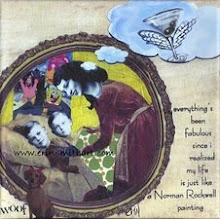This morning I introduced Sophie to her kindergarten Sunday school class. I explained that she has Down syndrome, that it isn’t anything to be afraid of and that she is so excited to become friends with her classmates. We talked about similarities and differences and that differences aren’t bad. I shared that she may not be able to talk with them like the other kids in class but that she loves to play and learn and have fun.
Her teacher read the book “My Friend Isabelle” by Eliza Woloson. It’s a fun book about a typical friendship between a little boy named Charlie and his friend Isabelle. Isabelle has Down syndrome. Charlie does not. This book highlights the similarities between these friends and encourages kids to understand that they too can be friends with someone with differences.
After the book we made sure that the kids knew that they could ask us questions at any time. A letter modified from the one we sent home at the beginning of the school year to her kindergarten class has been sent to the families from Sunday School. Click HERE. This letter opened up a lot of doors for us at Sophie’s elementary school and we hope it will do the same with her Sunday school peers.
Our new church has a membership of 2,600 and therefore has many staff members to serve our community. We are working with the Director of Children and Family Ministry on finding someone to act as a PCA, (personal care assistant) for Sophie during Sunday school so that both Mark and I can attend services. I have found someone who can provide training to the aid.
Beyond how inclusion will be addressed with Sophie, I’ve felt drawn to look more deeply into the needs of people with disabilities in our congregation. I’ve been reading “Including People with Disabilities in Faith Communities by Erik Carter, whom I saw present at the PDE Bureau of Special Education Conference last week. This interfaith book is so rich with information that we donated a copy to the church and Sophie’s teacher is reading it now.
In my mind, I would love to tap into existing work of the church and be a part of a Task Force on Disabilities. In my research I happily discovered that much work has already been done on the national level. “A task force of volunteers was asked to develop policy and recommendations for the church to work for justice with persons who have disabilities, both within the church itself and the wider social order. A consultation with informed Presbyterians drawn from the synods enriched the work. This policy of the Presbyterian Church (U.S.A.) confirms that the church—the Body of Christ—is to be a fully inclusive body in all dimensions of its life.” Living into the Body of Christ a paper on these policies and recommendations was created in 2006. Click HERE.
Out of their work was written a Congregational Audit of Disability Accessibility & Inclusion which is just a fabulous tool for any faith community to take an honest look at how inclusive and accessible their community truly is. Click HERE.
I can’t possibly list all of the good work they have done on this, so instead if you are curious I will send you to the Presbyterian Health Education and Welfare Association website where you can read about the other important work being done on domestic violence, child abuse, HIV/Aids and more. This link is specific to disability concerns. Click HERE.
So off I go to find out what is happening at church already. When I’m done, I plan to have a replicable module for inclusion available for faith communities. But first, a nap! Happy St. Patrick’s Day.













2 comments:
This is awesome!!! Thanks for all the great info. I passed it on to some friends whose communities haven't been super receptive.
Thank you Molly! I keep hearing such disheartening stories of fear and exclusion. I'm all fired up and working hard on creating something replicable for most faith communities to be inclusive. Fortunately a lot of work has already been dodne and tons of great information already exists. If you don't mind, I'd like to ask if you could share your friends' experiences. Having a collection of real situations could come in handy.
---Jen
Post a Comment